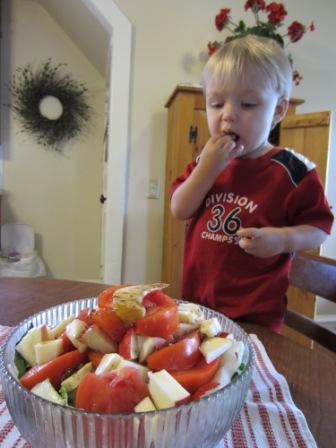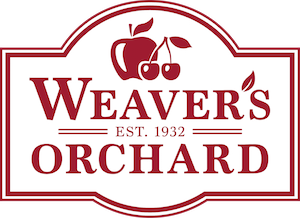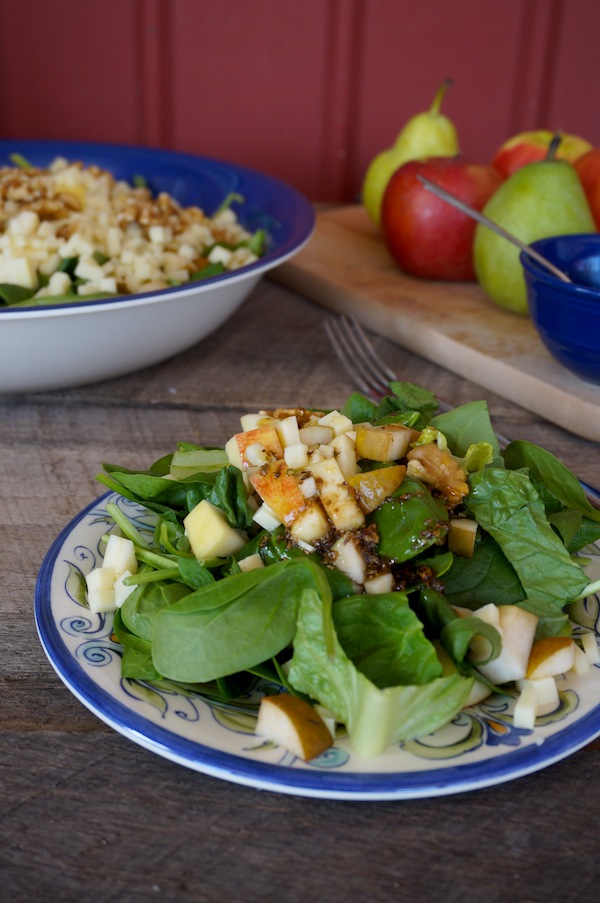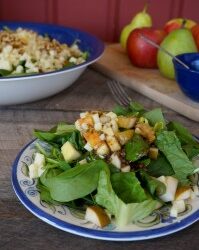About a year into our marriage, my husband Justin and I decided to challenge ourselves and see how much we could save on groceries while improving our diets. (Easier said than done!) I’ve learned that there isn’t really a quick fix or set plan to follow at the grocery store since prices are constantly fluctuating. (Being married to a fruit grower helps me understand why– a farmer’s cost of growing produce constantly has to adjust to changing weather, legislation, fuel prices, and insurance premiums). But there are ways to save, in these uncertain times when prices seem to constantly change! The biggest thing we’ve learned as a family is that all the little things you do surrounding food purchasing and preparing add up. You may not notice a difference on your waistline or wallet in the short term, but in the long term you will see the benefits of smaller clothing sizes and smaller health care bills. By planning ahead, buying in bulk, canning and freezing local foods in season, I’ve been able to get the highest amount of nutrients into our diets at a lower cost. Plus, I feel good knowing that my local produce purchase is helping to sustain agriculture in our region. For example, I love knowing that the potatoes I buy in bulk from our farm market are harvested fresh from an hour away by my friend’s husband on their family’s farm.
Here is a highlight of some of our family’s strategies for saving money in the checkout line. (This by all means is not an exhaustive list, so feel free to leave your comments and tips, I’m sure I could learn some things and others who read the blog would be interested too!) Stay tuned for articles in the coming weeks from our other blog writers on grocery budgeting, too.
- Buy in Bulk & Make-Ahead
- Buy local produce in season (or grow your own), and preserve it. Doing this is better for your health, the environment, local economy and your wallet. Farmers will often give a wholesale discount when they have excess. A farm market like ours can call you when certain products are available if you ask us to. I find this kind of exciting. It’s like having a baby– you never know quite when it’s going to arrive, but when it does– you drop everything and go to work! If the wholesale quantity of something is too much for you to use, team up with a friend and split it.
- Chop & freeze vegetables ahead of time.
- When I’m making a meal that has onions, I will dice one or two extra and throw them in a baggie in my freezer. This only takes a few extra minutes and it saves time later when I’m in a pinch.
- Diced tomatoes and peppers also freeze well. The tomatoes can be frozen in halves or quarters. When you need crushed tomatoes, let them thaw on the counter and squeeze the skins off and they’re ready to go into the pot. (I often leave the skins in for soups and stir fries because I don’t want to waste any nutrients).
- Broccoli and green beans can also easily be frozen (check out websites like www.pickyourown.org for directions).
- Make & freeze extra dinners. I often try to double or triple recipes and freeze the excess in smaller portions. On busy days this saves my family money because then we have a healthy meal in minutes, and we’re not tempted to grab fast food or a frozen dinner at the grocery store at the last minute.
Canning Tips:
- Recruit some friends. If the notion of preserving your own food is daunting, team up with a friend (or friends). This summer I made salsa with one of my best friends and we had a great time reconnecting. It’s amazing how fast the time goes when you’re having a lively conversation!
- Pack in the nutrients. When I look for canning recipes, I try to find recipes that fit the most produce/nutrients into one jar. This saves shelf space and jars as well. Use the web to find recipes that best suit your family’s needs.
- Reuse & save! If you’re buying jars new, the cost can add up. Look for canning supplies at thrift stores, yard sales, and estate auctions. If you have elderly neighbors, ask them if they have any jars they want to get rid of. Many older women who don’t do as much canning anymore are thrilled that someone is able to use their jars. Most of my canning jars were found in an old abandoned barn on my Aunt’s property in Virginia . They were filthy, but after scrubbing and sterilizing them in the dishwasher they looked as good as new. (Just keep in mind that you don’t want to use jars with cracks or chips out of the rim).
Start from Scratch!
- Bake your own bread. I buy my flour in bulk from an Amish farmer. I’ve also heard of women buying grain directly from the feed mill and grinding it themselves. This is a great way to save pennies and packaging.
- Freeze extra dough. When I make bread, I make four loaves at a time. I will shape one or two loaves and freeze the remaining balls of dough in baggies. When you want to bake them, take them out the night before set them on your counter in a bowl covered with a towel. The dough will thaw and start to rise overnight. By morning you should be able to just pop it in the pan and have a fresh piece of bread for your breakfast. (oh, you can also wash out the bags and reuse them the next time you make bread!)
Healthy Food Saves Money
- Consider the costs. Whenever I’m shopping for produce, I keep in mind the hidden benefits behind the price tag. The “higher” cost of eating healthy is nothing in comparison to what the “cost” would be of not eating healthy.
Working in Occupational Therapy at a hospital makes me aware of how many people suffer the consequences of unhealthy diets and lifestyles. For example, having to have knee surgery resulting from carrying too much body weight plus all the side effects and therapy and years of recovery can entail quickly add up. In comparison to the healthcare price tag — I’ll pay more for healthy food any day!
Since our family has cut most preservatives out of our diet and begun eating more natural foods, we’ve found our son’s attention span to increase. He is less hyperactive, has an increased attention span and is happier and healthier. As a mom, that’s priceless.
The key to saving money at the grocery store and improving your diet is to change one little thing you do at a time. Doing a major overhaul on how you cook and shop can be overwhelming and often leads to failure. My husband and I made one small change at a time — for example, we started out by challenging ourselves to preserve just our tomato products because we wanted to minimize the amount of food we were consuming out of aluminum cans. Then I started freezing excess of diced onions and peppers. After that, I became interested in baking bread. Next, I decided to make my own salad dressing. Over a two year period of time we realized how much the small changes we had made really affected what we were spending on our food and we also noticed how our diets had become healthier. The key to saving money and eating healthy is to enjoy the process and make it a fun family affair! Grocery shop and plan meals together– if your husband and kids have say in what they’re eating they may be more willing and excited about trying it out! In parting I’d love to leave you with a seasonal recipe from our table to yours:
Local Apple & Pear Harvest Salad
Ingredients
- 1 large Bosc pear (or two medium)
- 1 medium semi-tart apple (Honey Crisp, Cortland, or Jonathan would work great!)
- 1 large tomato
- 1 head of Romaine lettuce
- 1/2 bag of fresh baby spinach
- 1 pound September Farms medium Cheddar cheese, chopped into small cubes
- 1/2 cup of walnut pieces
DRESSING: - 1/4 cup olive oil
- 1–2 tablespoons balsamic vinegar
- 2–3 garlic cloves (to taste)
- 1 teaspoon dried oregano
- 1/4 teaspoon onion powder
- Salt, to taste
Instructions
- Wash and dice the pear, apple and tomato (leaving skins on). Wash lettuce and spinach and shred to desired size.
- Mix in a large salad bowl. Add cheese and walnuts.
- Separately, prepare the dressing by mixing dressing ingredients together in a container with a lid (I like to use a jelly jar). Just before serving, drizzle desired amount of dressing over salad and serve.



